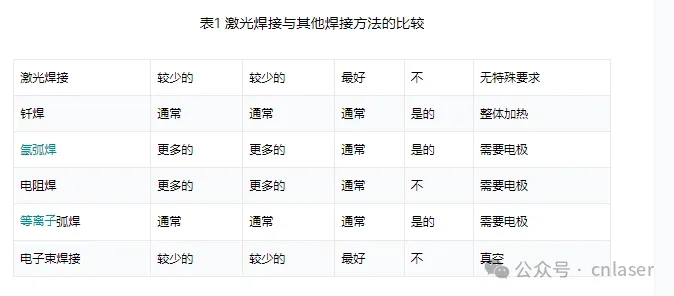Hot Keywords:
- All
- Product Name
- Product Keyword
- Product Model
- Product Summary
- Product Description
- Multi Field Search
Views: 3 Author: Site Editor Publish Time: 2024-04-16 Origin: Site
Are you tired of traditional arc welding techniques that produce rough surfaces, require high-purity argon gas, and limit welding efficiency? Laser welding is your best choice, which is a cutting-edge production technology that utilizes high-energy density lasers as welding heat sources.
In this article, we will explore the advantages of laser welding, compare it with traditional arc welding, and examine the process parameters that affect the quality of laser welding. Understand how laser welding provides stable quality, small welding gaps, and high efficiency for the high-end sheet metal manufacturing industry.
Please continue reading to learn more information!
introduce
Welding is the main process of sheet metal processing, characterized by high labor intensity and harsh working conditions. Therefore, high proficiency is crucial.
The development of welding automation and innovative connection methods has always been a focus of attention for welding technology professionals.
A key aspect of welding automation is the control of welding quality and efficiency. During this process, challenges such as arc and weld alignment, uniformity of component gaps, weld penetration depth, and welding deformation control must be addressed.
With the rapid progress of laser welding technology, its applications in various fields such as household appliances, high-tech electronics, automotive manufacturing, high-speed train production, and precision machining have made significant leaps and become increasingly mature.
By comparing with traditional arc welding, one can understand the advantages of laser welding. This article will delve into the process of laser welding and explore how to achieve better results.
To evaluate the quality of laser welding, it is necessary to consider the aspect ratio and surface morphology. This article will investigate the process parameters that affect these indices.
Laser welding experiments were conducted on stainless steel, aluminum, and carbon steel plates. The results provide practical insights that can be used for welding production.
Laser welding is a cutting-edge production technology that utilizes high-energy density lasers as welding heat sources. It is widely used in the sheet metal manufacturing industry due to its high energy density, fast welding speed, environmental friendliness, and minimal deformation of the sheet metal.
Laser welding can be divided into conduction welding and deep penetration welding based on the characteristics of weld formation. Conduction welding uses low laser power, which results in longer formation time and shallower melting depth of the molten pool.
It is mainly used for welding small components.
In contrast, deep penetration welding has a high power density and the metal in the laser irradiated area melts rapidly.
This melting is accompanied by strong vaporization, forming a weld seam with a significant depth and aspect ratio of up to 10:1.
Thin plate components can be connected using various welding methods, including laser welding, brazing, atomic hydrogen welding, resistance welding, plasma arc welding, and electron beam welding.
Compared with other common welding techniques, laser welding has significant advantages in heat affected zone, thermal deformation, weld quality, necessity of filler materials, and welding environment.
The comparison between laser welding and other welding methods is shown in Table 1.
